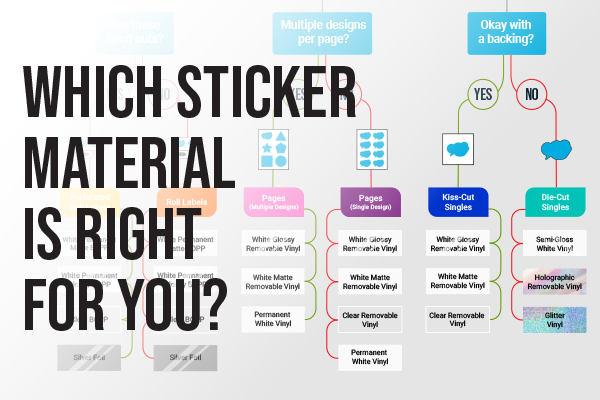Creating and marketing stickers online can be a fun and profitable endeavor in 2024. First, identify your target audience and design unique stickers that resonate with them; using graphic design tools like Canva or Adobe Illustrator can really help. Next, set up an online store on platforms such as Etsy or Shopify to showcase your work. Then, promote your stickers through social media channels like Instagram and TikTok to reach a wider audience; engaging with followers is key! Finally, consider running giveaways or collaborations with other artists to boost visibility. Stickers are small but impactful—get started today!
Understand Your Target Market
 Credits: coschedule.com
Credits: coschedule.com
Knowing your target market is crucial for creating and marketing stickers that resonate with potential buyers. Start by identifying who your ideal customers are. Are they teenagers, parents, or small business owners? Understanding their demographics, interests, and purchasing behaviors will help you tailor your designs and marketing strategies effectively. For instance, if you’re targeting teens, you might want to create trendy designs featuring popular culture references or memes. On the other hand, if your target audience includes small business owners, consider offering customizable stickers that they can use for branding purposes.
Conduct market research to gather insights into what styles and themes are popular. Use social media platforms like Instagram and Pinterest to see what sticker designs are trending or what types are getting the most engagement. Also, consider joining online communities or forums where your target audience gathers. Engaging in discussions can provide valuable information about their preferences and pain points.
Lastly, don’t forget to create buyer personas. These are fictional characters that represent segments of your target market. By outlining their characteristics, motivations, and challenges, you can create stickers that speak directly to them, increasing the chances of making a sale.
Designing Your Stickers
 Credits: alltimedesign.com
Credits: alltimedesign.com
When designing your stickers, start with a clear concept that resonates with your target audience. Think about the themes and styles that appeal to them. For example, if your audience loves plants, you might consider creating stickers with various plant illustrations or fun gardening quotes. Use design tools like Adobe Illustrator, Canva, or Procreate to bring your ideas to life. Keep the design simple yet eye-catching, as intricate details may not print well on small stickers.
Colors play a significant role in sticker design. Choose a color palette that reflects the mood you want to convey—vibrant colors can attract attention, while softer tones may appeal to a more relaxed audience. Remember to consider how your stickers will look against different backgrounds. Preview your designs on mockups to see how they will appear in real-life settings.
Also, think about the shape and size of your stickers. Round or die-cut shapes can make your stickers more unique. Ensure the dimensions align with the intended use, whether for laptops, water bottles, or planners. Once you have your designs, seek feedback from friends or potential customers to refine your work before finalizing it for production.
Choosing the Right Materials
 Credits: stickeryou.com
Credits: stickeryou.com
When creating stickers, the material you choose plays a crucial role in the final product’s quality and durability. There are several options to consider, each with its own benefits. For outdoor stickers, a vinyl material is recommended due to its weather resistance and long-lasting properties. Vinyl stickers can withstand rain and sunlight without fading, making them ideal for cars or outdoor use.
For indoor stickers, paper-based materials can be a cost-effective choice. They are easy to print and can be used for decorative purposes on notebooks, laptops, or walls. However, keep in mind that they may not hold up as well in humid environments.
Additionally, you might want to explore finishes like matte, glossy, or transparent. A glossy finish can enhance colors and make your design pop, while a matte finish offers a more subtle, sophisticated look. Transparent stickers can create a unique effect when applied to different surfaces, allowing the background to show through.
In summary, selecting the right material depends on your target audience and the intended use of your stickers. Testing samples from different suppliers can help you find the perfect match for your designs.
| Material Type | Characteristics | Best Uses | Cost Range | Supplier Suggestions |
|---|---|---|---|---|
| Vinyl | Durable, water-resistant, and UV protected | Outdoor stickers, bumper stickers | $1 – $5 per sheet | Online craft suppliers, local print shops |
| Paper | Inexpensive, easy to print designs on, not water-resistant | Indoor stickers, budget-friendly options | $0.50 – $3 per sheet | Local office supply stores, online printing services |
| Clear Film | Transparent, creates a unique look | Window decals, decorative stickers | $2 – $6 per sheet | Specialty printing companies, online crafting shops |
| Foil | Shiny, reflective finish, eye-catching | Specialty stickers, party favors | $2 – $8 per sheet | Custom print services, local graphic shops |
| Magnetic Sheet | Adhesive magnet, durable | Refrigerator magnets, promotional items | $5 – $10 per sheet | Online custom printing platforms, local suppliers |
Setting Up Your Online Store
To set up your online store for selling stickers, you first need to choose an e-commerce platform that suits your needs. Popular options include Shopify, Etsy, and WooCommerce. Each platform has its strengths; for instance, Etsy is great for handmade items and has an existing customer base, while Shopify offers more customization and scalability. After selecting a platform, create an account and set up your store by adding an appealing name and logo that reflect your brand.
Next, focus on creating product listings. This includes taking high-quality photos of your stickers, writing clear and enticing descriptions, and setting competitive prices. Ensure the photos capture the design and quality of the stickers well. For example, if your stickers have a glossy finish, take close-up shots to highlight that feature.
Don’t forget to set up payment options to make transactions easy for customers. Most platforms allow you to integrate PayPal, credit cards, and other payment methods. Lastly, ensure that your store has clear policies for shipping, returns, and customer service. This transparency builds trust with potential buyers and leads to better customer experiences.
Promoting Your Stickers Effectively
To effectively promote your stickers online, leverage social media platforms where your target audience hangs out. Platforms like Instagram and TikTok are ideal for showcasing your designs through eye-catching posts and engaging stories. Share behind-the-scenes content that highlights your design process or the inspiration behind each sticker. Collaborating with influencers who resonate with your brand can significantly increase your reach. For example, if you create eco-friendly stickers, partnering with sustainability influencers can attract like-minded customers.
Utilizing paid advertisements on platforms like Facebook and Instagram can also boost visibility. Create targeted ads that showcase your best-selling stickers to specific demographics. Use high-quality images and compelling captions to grab attention. Additionally, consider creating a unique hashtag for your sticker line to encourage user-generated content. When customers share their purchases using your hashtag, it builds community and spreads awareness.
Engaging with your audience is crucial. Respond to comments, host giveaways, and encourage customers to share photos of their stickers in use. This not only builds loyalty but also provides you with valuable content to repost. Lastly, consider joining online marketplaces and communities related to your niche. Websites like Etsy or Redbubble can help you tap into established customer bases, giving your stickers more exposure.
- Utilize social media platforms like Instagram and Pinterest to showcase your designs.
- Collaborate with influencers to reach a broader audience.
- Engage with your community through contests and giveaways.
- Use targeted ads to reach specific demographics.
- Create engaging content such as tutorials and behind-the-scenes looks.
- Optimize your product descriptions and use relevant keywords for SEO.
Frequently Asked Questions
1. What materials do I need to make stickers?
To make stickers, you’ll need some design software, printable sticker paper, a printer, scissors or a cutting machine, and a laminating sheet if you want to make them glossy.
2. How can I design my own stickers?
You can design your stickers using graphic design software like Adobe Illustrator or free tools like Canva. Choose your shapes, colors, and text to create unique designs.
3. Where can I sell my stickers online?
You can sell your stickers on platforms like Etsy, Redbubble, or your own website. Social media platforms like Instagram and TikTok can also help you reach more customers.
4. How do I promote my stickers effectively?
Promote your stickers by using social media to showcase your designs, collaborating with influencers, and running targeted ads. Engaging with your audience and sharing behind-the-scenes content also helps.
5. What size should I make my stickers?
The size of your stickers depends on your design and purpose. Common sizes range from 2 to 4 inches, but you can be creative as long as they fit your packaging and appeal to your target customers.
TL;DR This guide outlines five easy steps to create and market stickers online in 2024: identify your target market, design appealing stickers, select suitable materials, set up your online store, and effectively promote your stickers.





